Basements are often thought of as dark, dreary places that are used for storage. However, basements can also be a great place to entertain guests or to have a family movie night. So if your basement is starting to look like a dungeon, don’t worry!
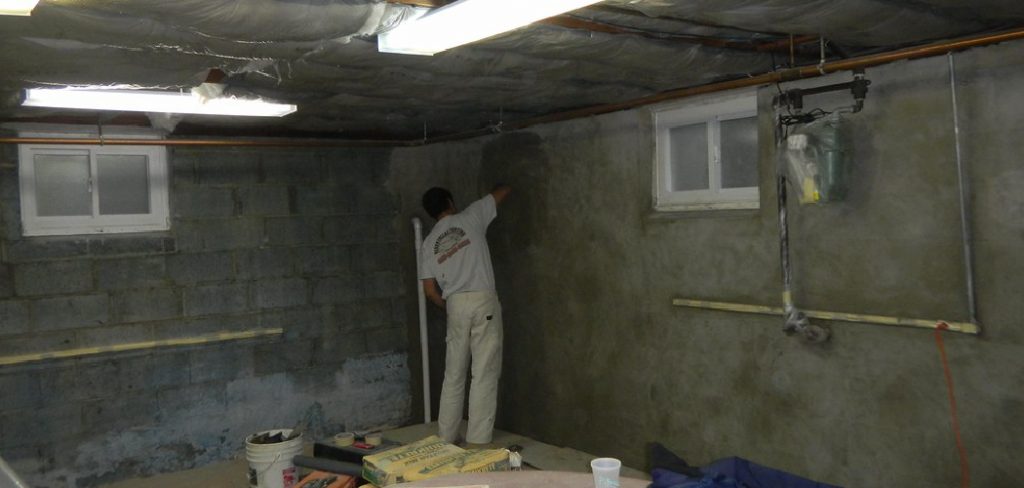
You can do several things to fix crumbling interior basement walls and make your basement more livable. Check out the blog post below for more information about how to fix crumbling interior basement walls.
Summary: To repair crumbling interior basement walls, determine the damage’s extent and remove any damaged material. Add mortar to fill any gaps and apply a concrete patch. To finish up, prime and paint all surfaces, caulk any cracks, and check for moisture before completing the project.
What Is Crumbling Interior Basement Walls?
When water leaks through cracks in your foundation or walls, it can cause the surrounding material to erode. This is especially true for basement walls, which are often made of concrete, brick, or stone. Over time, this erosion can weaken the wall, causing it to crumble. In some cases, the damage may be extensive enough that the wall collapses completely.
If you suspect that your basement walls are crumbling, it’s important to have them inspected by a professional as soon as possible. Crumbling basement walls can not only lead to expensive repairs but can also create safety hazards. For example, if a large wall section were to collapse, it could cause serious injury or even death.
If you have a crumbling basement wall, don’t wait to get it fixed – call a professional today.
Why Might You Need to Fix Crumbling Interior Basement Walls?
When it comes to your home, the basement is often an afterthought. But if you have a problem with crumbling basement walls, it can quickly become a top priority. Crumbling basement walls can be caused by several factors, including water damage, inadequate drainage, and structural problems.
If left unaddressed, these problems can damage your home, including foundation settlement and mold growth. Fortunately, there are several ways to fix crumbling basement walls. By repairing the cracks and sealing up any openings, you can help to prevent further damage and keep your basement dry and comfortable.
7 Steps to Follow on How to Fix Crumbling Interior Basement Walls
If your basement walls are crumbling, you’re not alone. Unfortunately, this is a common problem with basements, especially older ones. There are several ways to fix crumbling interior basement walls, but the best way to fix them depends on the severity of the problem and how much work you want to do.
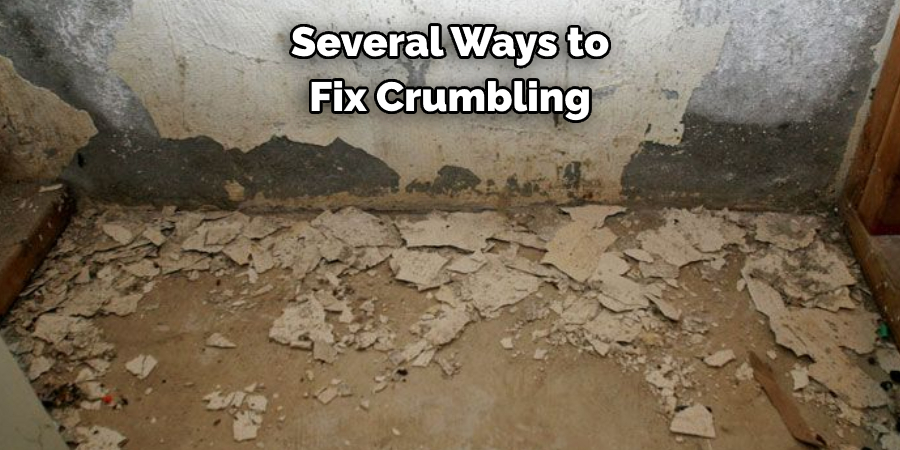
1. Determine
The first step is to determine the cause of the problem. For example, if your basement walls are crumbling because of water damage, you’ll need to address the source of the water before you can fix the walls. This may require fixing leaks, waterproofing the basement, or both.
2. Remove Damaged Material
Once you’ve addressed the cause of the problem, you’ll need to remove any damaged material. This may require chipping away at the wall with a hammer or other tool. Be sure to wear protective gear, such as gloves and a dust mask, to avoid breathing in dust particles.
3. Apply Mortar
Once you’ve removed all the damaged material, it’s time to apply mortar to the area. Start by mixing the mortar according to the manufacturer’s instructions. Then, use a trowel to apply the mortar to the wall, filling in any gaps or holes. Smooth out the surface of the mortar, so it’s level with the rest of the wall. Allow the mortar to dry for the time specified on the package before continuing.
4. Apply Concrete Patch
Once the mortar is dry, it’s time to apply a concrete patch to the area. You can apply a putty knife to the affected area to apply the patching compound. Be sure to smooth it out as much as possible and allow it to dry completely before proceeding.
5. Prime and Paint
Once the patching compound is dry, you will want to prime the area before painting. This will help ensure an even paint job and also help to seal the patched area further. Be sure to use a high-quality primer designed for masonry or concrete. Once the primer is dry, you can then paint the area to match the rest of your basement walls.
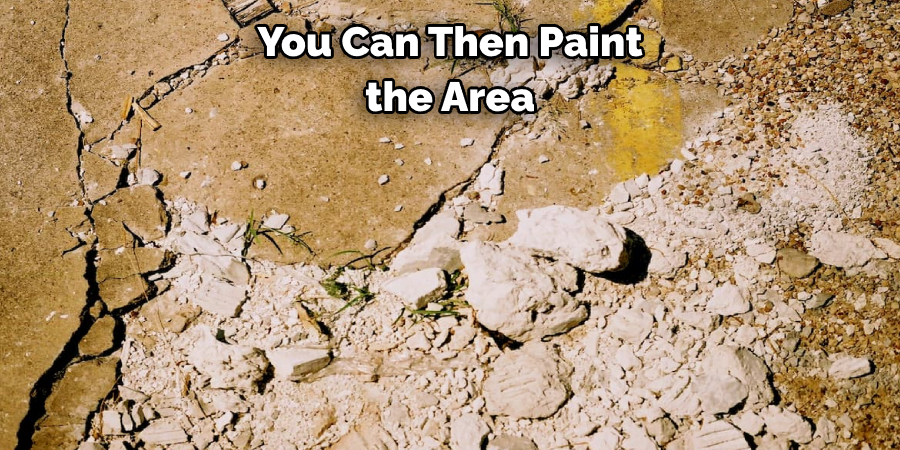
6. Caulk Cracks
In order to further waterproof your basement, you’ll need to caulk any cracks in the walls or floor. Use a caulking gun to apply silicone caulk to any cracks, big or small. You can also use hydraulic cement to fill in larger cracks. Be sure to smooth out the cement so that it is level with the rest of the wall.
7. Finish Up
Once you’ve taken all of these steps, your basement walls should be fixed and no longer crumbling. Be sure to inspect the walls regularly and address any new problems as they arise. By taking preventive measures, you can extend the life of your basement walls and avoid major repairs in the future.
That’s it! You’ve now learned how to fix crumbling interior basement walls. If you have any further questions, consult a professional contractor. They can help you assess the problem and find the best solution for your home.
You Can Check It Out to Fix a Punch in the Wall
What Causes Crumbling Interior Basement Walls and How to Prevent It
As any homeowner knows, a strong foundation is essential for a well-built home. Unfortunately, basements are particularly vulnerable to damage, as they are often exposed to moisture and can be subject to cracking or crumbling walls. While there are many potential causes of basement wall damage, one of the most common is poor drainage.
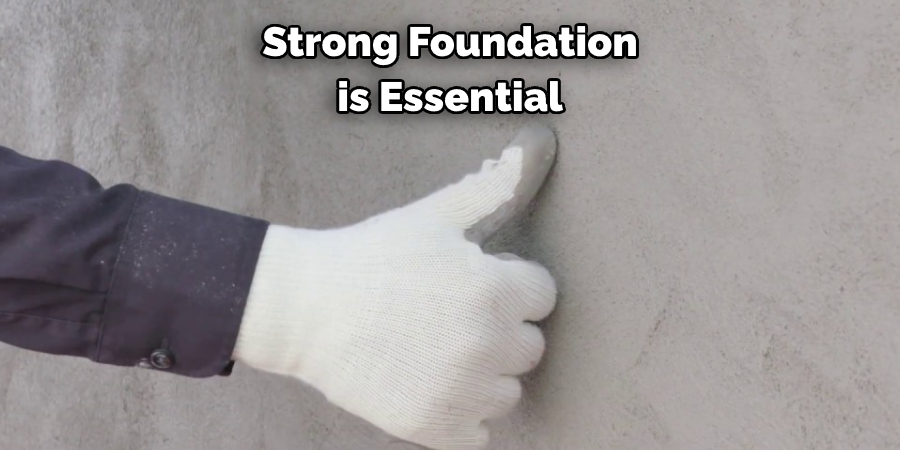
When water seeps into the soil around the foundation, it can create hydrostatic pressure that causes the walls to crack or collapse. Fortunately, there are a few simple steps that can be taken to prevent this type of damage. First, make sure that gutters and downspouts are properly installed and in good working condition.
Second, direct runoff away from the foundation with landscaping or grading. Finally, consider installing a sump pump to remove excess water from the basement. By taking these precautions, you can help keep your basement walls healthy and strong.
What Are Some Temporary Fixes for Crumbling Interior Basement Walls?
If your home has a basement, it’s important to keep an eye on the condition of the walls. Crumbling or flaking plaster is usually the first sign of a problem, but by the time this occurs, there may already be significant damage to the underlying structure.
Fortunately, there are a few temporary fixes that can help to stabilize the situation until you can make more permanent repairs. One option is to use flexible steel strips that can be drilled into the wall and then screwed into place. These strips will help support the plaster’s weight and prevent further cracking.
Another option is to apply adhesive-backed polyurethane foam panels to the wall. These panels will act as a barrier against moisture and help insulate the basement. Either of these methods can buy you some time until you can have the damage repaired by a professional.
How Can You Tell if Your Walls Are Crumbling
No one wants their walls to crumble. But how can you tell if your walls are in danger of crumbling? There are a few key signs to look for: cracks, bulges, or leaning. If you notice any of these problems, it’s important to take action immediately. Cracks can be caused by several things, from Settlement cracking.
This happens when the soil underneath your home shift, causing the foundation to crack. Soil expansion and contraction can also cause cracks and foundation settling. Bulges usually indicate that there is too much water pressure from the outside. This can happen during periods of heavy rain or after a flood.
Leaning usually means that the foundation has shifted and is no longer level. If you see any of these problems, it’s important to contact a professional right away. They can assess the damage and recommend the best course of action.
With some quick action, you can prevent your walls from crumbling down. Keep reading for more information about how to fix crumbling interior basement walls.
Are There Any Risks Associated with Fixing Crumbling Interior Basement Walls
Crumbling basement walls are not only unsightly, but they can also pose a serious safety hazard. If left unaddressed, the damage will only worsen over time, eventually leading to a collapse. Fortunately, there are several ways to repair crumbling walls, but it’s important to be aware of the potential risks involved.
One common method is to install plastic sheets or panels over the damaged area. This can provide a temporary fix, but it’s not always effective in the long term. In addition, it’s important to make sure that the panels are properly secured, as they could become dislodged and fall, injuring anyone who happens to be nearby.
Another option is to inject concrete into the damaged area. This can be an effective way to reinforce the wall, but it’s also important to make sure that the concrete is allowed to cure properly before any further damage is done. Failing to do so could result in even more serious problems down the road.
No matter which method you choose, it’s important to consult a professional before taking action. They will be able to assess the situation and recommend the best course of action for your particular needs.
You Can Check It Out to Fix Chipped Glass Corner
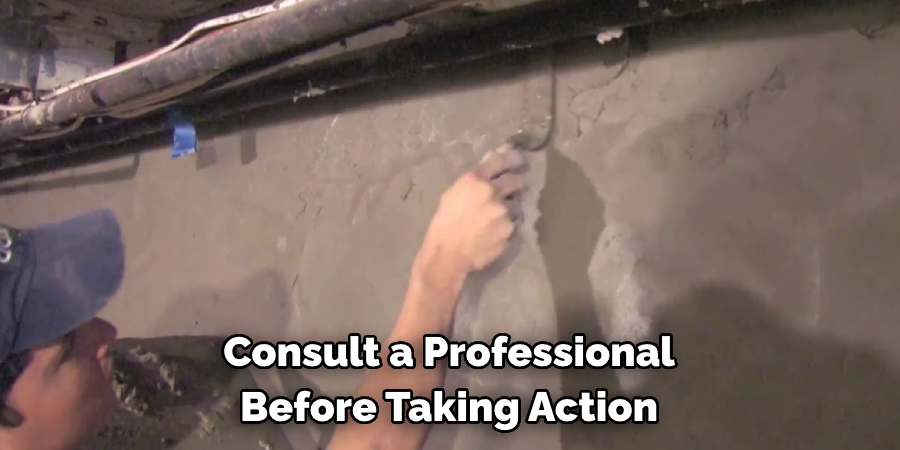
Frequently Asked Questions
Why is My Concrete Wall Crumbling?
If you are noticing that your concrete wall is crumbling, there are a few things that you can do to try and fix the situation. One of the first things that you should check is whether or not your foundation is intact. If it’s not, then the wall may be unstable and unable to sustain weight without compromising its structure.
Additionally, if water infiltration is an issue in your area, then adding sealer or spackling may help to protect against moisture damage. Lastly, depending on the type of concrete paneling that was installed, sometimes removing potential moisture sources (like weeping trees) can help to reduce deterioration over time.
Can a Crumbling Foundation Be Fixed?
Yes, a crumbling foundation can be fixed. But first, the damage needs to be diagnosed and the weaknesses identified. Once those are in place, effective repair methods can be put into place.
Some of the most common repairs include foundational leaks repaired with waterproofing membrane and gaskets or by replacing slabs; settling caused by inadequate soil preparation corrected using balanced natural materials such as compost or aged manure filed under gravity; cracked concrete stabilizing with portland cement paste followed up with sealant; misaligned framing secured with galvanized steel straps nailed at 16-inch intervals around the perimeter of posts and beams.
What is a Class 3 Crumbling Foundation?
A Class 3 Crumbling Foundation is a structural failure that generally occurs in soil or concrete slabs and can lead to serious structural damage. Symptoms of a Class 3 Crumbling Foundation include subsidence (a lowering of the ground surface), cracking, and deterioration of the foundation’s foundation walls and columns.
If you’re noticing any of these symptoms in your property, it’s important to get it checked out by a professional as soon as possible. By doing so, you can prevent further damage and potential structural failures that could lead to costly repairs or even loss of your home.
In most cases, a Class 3 Crumbling Foundation can be repaired rather than replaced, however, it’s always important to have an expert evaluate the situation before making any decisions.
What Is It Called When Concrete Crumbles?
When concrete crumbles, it is typically due to water damage. This type of damage can be caused by a number of factors, including high humidity levels, large volumes of rainwater entering the structure quickly and continuously over time, or faulty waterproofing in the construction materials.
If you notice that your concrete is starting to crumble or crack, there are several steps that you can take to try and repair the damage. First thing first: check for any signs of leaks. If there are no signs of leaks, then you may need to raise the surface level of your concrete so that water doesn’t seep beneath it easily.
You may also want to install membrane barriers or coatings on exterior surfaces in order to prevent moisture from getting inside during intense rainfall events.
Conclusion
Basement walls can be fixed quickly and easily by following the steps we’ve outlined. By repairing your basement walls now, you can avoid more costly repairs in the future. Thanks for reading our post about how to fix crumbling interior basement walls. Have you tried any of these methods to fix your crumbling basement walls?
